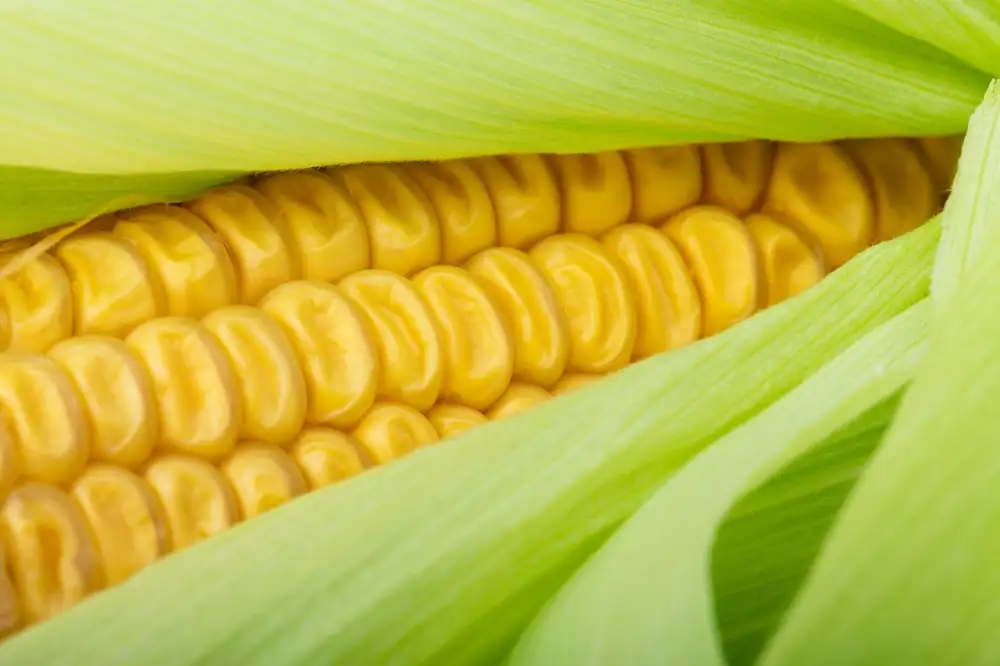Savor the Sweetness: Exploring the Delightful World of Sweetcorn in Culinary Artistry

- Introduction to sweetcorn
- History and origins of sweetcorn
- Nutritional benefits of sweetcorn
- Culinary uses and versatility of sweetcorn
- Popular sweetcorn recipes and dishes
- Tips for selecting and storing sweetcorn
- Sweetcorn farming and production
- Environmental impact of sweetcorn cultivation
- Conclusion: Celebrating the culinary artistry of sweetcorn
Introduction to sweetcorn
Sweetcorn, also known as maize or corn, is a delicious and versatile vegetable that has been enjoyed for centuries. With its vibrant yellow kernels and sweet flavor, sweetcorn adds a burst of freshness to any dish. Whether grilled, boiled, or roasted, this beloved vegetable is a staple in many cuisines around the world. Join us as we embark on a culinary journey to explore the delightful world of sweetcorn and discover the artistry it brings to our plates.
History and origins of sweetcorn
Sweetcorn, also known as maize or corn, has a rich history that dates back thousands of years. It is believed to have originated in Mesoamerica, specifically in what is now Mexico and Central America. The indigenous people of this region were the first to cultivate and domesticate sweetcorn around 9,000 years ago.
The ancient Mayans and Aztecs revered sweetcorn as a sacred crop and used it not only for sustenance but also in religious ceremonies. They developed various methods of cooking and preserving sweetcorn, including drying it to make flour and grinding it into masa dough for making tortillas.
Sweetcorn eventually made its way to Europe through Christopher Columbus' voyages in the late 15th century. It quickly spread across the continent and became a staple crop in many countries. In the United States, Native Americans played a crucial role in introducing sweetcorn to European settlers.
Over time, sweetcorn varieties were selectively bred for their sweetness, tenderness, and larger kernels. Today, there are countless hybrid varieties available worldwide, each with its own unique flavor profile.
The history of sweetcorn showcases its cultural significance and how it has evolved from a humble crop to a beloved ingredient enjoyed by people all over the world. Its journey from ancient civilizations to modern culinary artistry is a testament to its enduring appeal.
Nutritional benefits of sweetcorn
Sweetcorn is not only delicious, but it also offers numerous nutritional benefits. It is a good source of fiber, which aids in digestion and helps maintain a healthy weight. Sweetcorn is also rich in vitamins A and C, which support immune function and promote healthy skin. Additionally, it contains folate, which is essential for cell growth and development. Moreover, sweetcorn provides important minerals like potassium and magnesium that help regulate blood pressure and maintain strong bones. With its combination of taste and nutrition, sweetcorn is truly a delightful addition to any diet.
Culinary uses and versatility of sweetcorn
Sweetcorn is a versatile ingredient that can be used in a variety of culinary creations. Its sweet and juicy kernels add a burst of flavor and texture to dishes. It can be enjoyed on its own as a side dish, or incorporated into salads, soups, stir-fries, and even desserts. Sweetcorn can be grilled, boiled, steamed, or roasted to bring out its natural sweetness. It can also be made into cornmeal for baking breads and muffins. With its versatility, sweetcorn offers endless possibilities for adding a touch of sweetness to any meal.
Popular sweetcorn recipes and dishes
Popular Sweetcorn Recipes and Dishes
Sweetcorn is a versatile ingredient that can be used in a variety of delicious recipes. Here are some popular sweetcorn dishes that will surely delight your taste buds:
1. Corn Chowder: This creamy soup is made with sweetcorn kernels, potatoes, onions, and bacon. It's a comforting dish perfect for chilly evenings.
2. Grilled Corn on the Cob: Nothing beats the smoky flavor of grilled corn on the cob. Simply brush the corn with butter, sprinkle with salt and pepper, and grill until tender and slightly charred.
3. Sweetcorn Fritters: These crispy fritters are made by combining sweetcorn kernels with flour, eggs, and spices. They make a great appetizer or side dish.
4. Mexican Street Corn: Also known as elote, this popular street food is grilled corn topped with mayonnaise, cheese, chili powder, lime juice, and cilantro. It's a burst of flavors!
5. Sweetcorn Salad: A refreshing salad made with sweetcorn kernels, cherry tomatoes, cucumber, red onion, and a tangy dressing. It's perfect for summer picnics.
6. Sweetcorn Bread: Add sweetness to your bread by incorporating sweetcorn kernels into the dough. It pairs well with soups or can be enjoyed on its own.
These are just a few examples of how sweetcorn can be used creatively in various dishes. Its natural sweetness adds depth of flavor to both savory and sweet recipes alike. So go ahead and explore the culinary possibilities of sweetcorn!
Tips for selecting and storing sweetcorn
When selecting sweetcorn, look for ears that have bright green husks and plump kernels. The husks should be tightly wrapped and free from blemishes or wormholes. Gently squeeze the ear to ensure it feels firm and the kernels are evenly spaced. For optimal sweetness, choose ears with golden tassels at the top.
To store sweetcorn, keep it in the refrigerator with the husks intact to retain freshness. It is best to consume sweetcorn as soon as possible after purchasing, as its natural sugars start converting into starch once harvested. If you need to store it for longer, blanch the corn and freeze it in airtight containers or freezer bags.
Remember that fresh sweetcorn is at its peak during summer months when it is harvested locally. So make sure to enjoy this delightful treat while it's in season!
Sweetcorn farming and production
Sweetcorn farming and production involves careful cultivation and harvesting techniques to ensure the highest quality corn. Farmers plant sweetcorn seeds in well-prepared soil, providing adequate water and nutrients throughout the growing season. The plants require regular monitoring for pests and diseases, with appropriate measures taken to protect the crop. Harvesting takes place when the corn kernels are plump and milky, indicating optimal sweetness. Once harvested, sweetcorn is typically sold fresh or processed into canned or frozen products to preserve its flavor and nutritional value. With its popularity and demand, sweetcorn farming plays a significant role in agricultural economies around the world.
Environmental impact of sweetcorn cultivation
Sweetcorn cultivation has both positive and negative environmental impacts. On the positive side, sweetcorn is a relatively low-input crop, requiring less water and fertilizer compared to other staple crops. Additionally, it helps in soil conservation by reducing erosion.
However, there are some negative aspects to consider. Sweetcorn farming often involves the use of pesticides and herbicides to control pests and weeds, which can have harmful effects on the environment. These chemicals can contaminate water sources and harm non-target organisms.
Furthermore, the large-scale production of sweetcorn requires significant amounts of land and water resources. This can lead to deforestation for land clearance and depletion of water supplies in areas where irrigation is necessary.
To minimize the environmental impact of sweetcorn cultivation, sustainable farming practices should be encouraged. This includes using organic fertilizers, implementing integrated pest management techniques, and practicing crop rotation to maintain soil health.
By being mindful of the environmental impact of sweetcorn cultivation, we can continue to enjoy its culinary delights while also preserving our planet for future generations.
Conclusion: Celebrating the culinary artistry of sweetcorn
In conclusion, sweetcorn is a versatile and delicious ingredient that adds a touch of sweetness to any dish. Its rich history and nutritional benefits make it a popular choice in culinary artistry. From soups and salads to fritters and desserts, the possibilities with sweetcorn are endless. So next time you're in the kitchen, don't forget to savor the sweetness of this delightful vegetable and let it delight your senses.
Published: 14. 11. 2023
Category: Food



